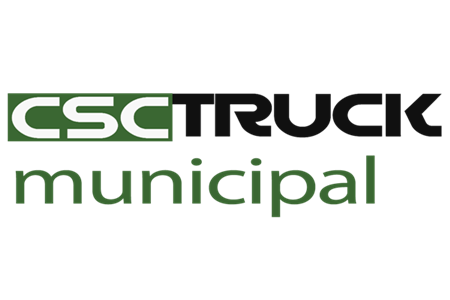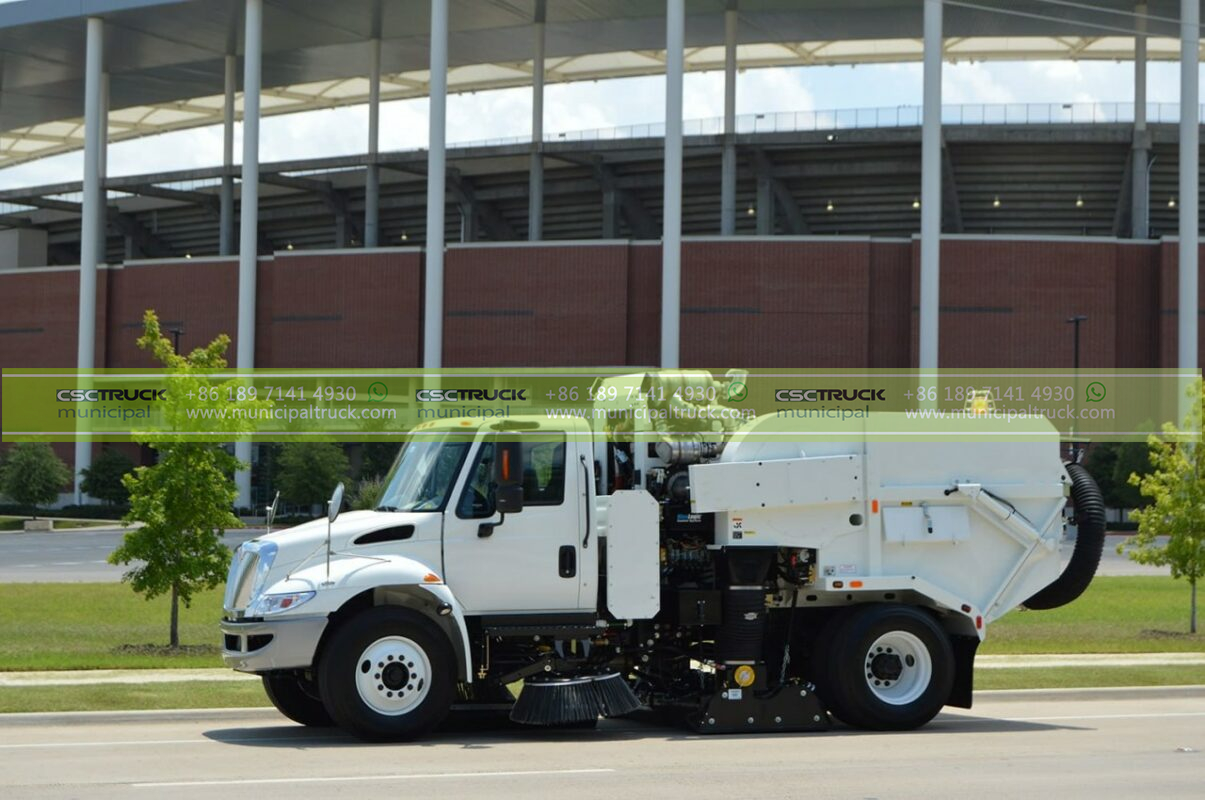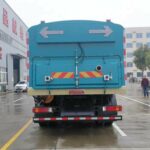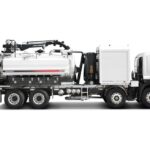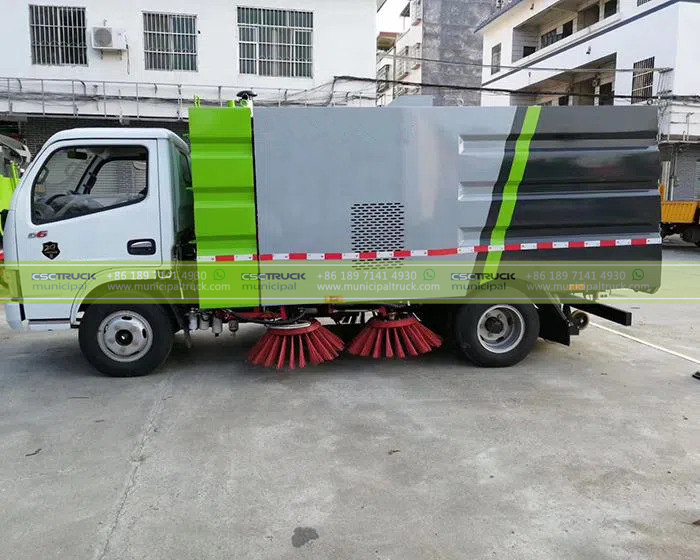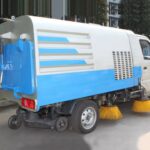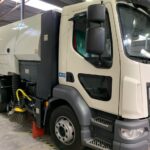Introduction: The Unsung Hero of Urban Infrastructure
Imagine a single vehicle gliding down a city street, first whisking away layers of grime, litter, and debris with powerful brushes, then blasting stubborn stains, gum, and sediment from the pavement with pinpoint high-pressure water jets. This isn’t futuristic fantasy; it’s the daily reality enabled by the combined sweeper jetter truck. This highly specialized piece of municipal equipment represents a significant leap in operational efficiency for public works departments and contractors tasked with maintaining vast networks of roadways, parking structures, and industrial sites. By merging the core functions of mechanical sweeping and high-pressure water jetting into one integrated platform, these trucks drastically streamline workflows, reduce costs, and enhance the overall quality and speed of surface cleaning and maintenance, effectively tackling two critical tasks in a single pass and minimizing disruption to bustling urban environments.
The Integrated Powerhouse – Core Systems Working in Concert
The true genius of the combined sweeper jetter truck lies in its seamless integration of two traditionally separate systems, creating a synergy far greater than the sum of its parts. Understanding this integration reveals its efficiency:vvvvvvvvvvvvvvvvv
- The Sweeping Module: At the vehicle’s heart is a sophisticated mechanical sweeping system. This typically features large, counter-rotating main brushes that agitate and dislodge debris from the pavement surface. Simultaneously, gutter brooms, angled precisely, sweep material from the curb line towards the path of the main brushes. A critical component is the powerful debris recovery system. A high-volume, negative-pressure fan generates a strong vacuum airflow through a large suction hose positioned near the main brushes. This airflow lifts the loosened debris off the ground, carrying it through the hose and depositing it into a large onboard debris hopper. Advanced filtration systems, often incorporating cyclonic separators and fine particle filters (like HEPA), ensure captured dust and fine particulate matter are contained within the hopper, preventing re-pollution of the air and meeting stringent environmental regulations. The effectiveness of this system hinges on precise brush positioning, optimal airflow velocity, and hopper capacity designed for extended operation.
- The Jetting Module: Integrated either alongside or behind the sweeping apparatus is the high-pressure water jetting system. This system centers around a heavy-duty, positive-displacement plunger pump capable of generating extreme water pressures, often ranging from 1,500 PSI up to 3,500 PSI or higher. This pump draws water from a substantial onboard fresh water tank. The high-pressure water is then delivered through reinforced, flexible hoses to manually operated lances or, increasingly common, to multi-nozzle surface cleaning heads mounted on a boom or deployed behind the truck. These heads often rotate, utilizing the hydrodynamic scouring action of multiple precisely angled jets to disintegrate and lift away deeply embedded grime, oil stains, chewing gum, paint overspray, and silt compacted into pavement pores that mechanical sweeping alone cannot remove. A separate debris recovery system for the jetting function, often involving a dedicated vacuum fan and surface squeegees channeling wastewater towards a suction inlet, collects the slurry created by jetting, pumping it into a dedicated recovery tank to prevent polluted runoff and comply with waterway protection regulations, completing a closed-loop cleaning process.
Operational Synergy – Streamlining Maintenance, Maximizing Output
The convergence of sweeping and jetting within one mobile unit unlocks profound operational advantages that redefine road maintenance efficiency:
- Single-Pass Efficiency: The most significant benefit is the ability to perform comprehensive cleaning in a single pass. Instead of requiring a sweeper truck to clean the surface followed days or weeks later by a separate jetting unit (or manual crew) to address ingrained contaminants, the combined truck accomplishes both tasks sequentially as it moves down the road at operational speeds. This drastically reduces the total time required to service a given route, freeing up crews and equipment for other critical tasks across the municipality or contract area. The reduction in traffic control setups, crew deployments, and vehicle mobilization represents substantial time and labor savings.
- Enhanced Cleaning Quality & Versatility: The sequential action creates a superior clean. Mechanical sweeping removes the bulk of loose debris, preventing it from being driven into the pavement by the high-pressure water or clogging the jetting recovery system. Jetting then effectively tackles the residual, bonded contaminants exposed by the sweeping action. This dual approach ensures a cleaner surface finish that lasts longer. Furthermore, the integrated system provides exceptional versatility. It efficiently handles routine street sweeping (leaves, sand, litter), post-construction cleanup (dust, gravel, sediment), spill remediation (oil, grease), and deep cleaning of heavily soiled areas like industrial sites, ports, or markets where mechanical sweepers alone are insufficient and standalone jetters would struggle with surface debris.
- Reduced Fleet & Resource Footprint: Consolidating two essential functions into one vehicle leads to significant fleet management benefits. Municipalities and contractors require fewer physical vehicles to achieve the same (or greater) level of service, reducing capital expenditure, insurance costs, parking requirements, and ongoing maintenance overhead. It also simplifies logistics – only one operator and one vehicle need scheduling, fueling, and maintaining per cleaning assignment. Resource efficiency extends to water usage; the jetting system’s recovery component allows for significant water recycling potential in sophisticated models, reducing freshwater consumption compared to traditional jetting methods without recovery.
Real-World Impact & Technological Nuance – Beyond Basic Cleaning
The practical value of the combined sweeper jetter truck extends far beyond simple street cleanliness; it contributes directly to infrastructure preservation, environmental protection, and cost-effective asset management:
- Proactive Infrastructure Care: Regular removal of abrasive sand, grit, and corrosive de-icing residues significantly reduces wear and tear on road surfaces. More crucially, the high-pressure jetting function plays a vital role in storm drain maintenance. By effectively clearing inlet grates and flushing accumulated silt, sediment, and debris from catch basins and the connecting pipe crownings before major rainfall events, these trucks help prevent localized flooding, reduce the burden on wastewater treatment plants during overflows, and protect downstream waterways from pollutant loads carried by stormwater runoff. This preventative maintenance is far more cost-effective than emergency flood response or major drain rehabilitation projects.
- Advanced Control & Environmental Compliance: Modern units feature sophisticated operator interfaces and control systems. Touchscreens allow operators to seamlessly switch between sweeping and jetting modes, adjust brush pressure, fan speed, water pressure, and vacuum suction independently for optimal performance on varying surfaces and soil conditions. Telematics systems monitor performance parameters, water levels, hopper capacity, and location, enabling efficient route planning and maintenance scheduling. Crucially, the integrated debris and slurry containment systems ensure compliance with increasingly stringent environmental regulations regarding particulate emissions and wastewater discharge, making these trucks essential for sustainable urban maintenance programs. The closed-loop recovery system prevents potentially contaminated water from entering storm drains, protecting local aquatic ecosystems.
While the combined sweeper jetter truck offers an unparalleled integrated solution for comprehensive surface cleaning and drain maintenance, specialized single-function vehicles still play crucial roles. A dedicated sweeper truck, typically offering larger hopper capacities and optimized purely for dry debris collection, remains highly efficient for routine large-area sweeping where deep cleaning or drain flushing isn’t required daily, such as highway cleanup or parking lot maintenance. Conversely, a standalone sprinkler truck (water truck) focuses exclusively on dust suppression, soil compaction, or vegetation watering, distributing large volumes of water at low pressure over wide areas without debris collection capabilities. The combined sweeper jetter’s brilliance lies in its ability to merge two intensive cleaning processes – surface debris removal and bonded contaminant elimination with wastewater recovery – into one highly mobile, efficient, and versatile platform, transforming the efficiency and effectiveness of modern road and infrastructure care programs. This integration directly translates into cleaner, safer streets and more resilient drainage systems, managed with fewer resources and less disruption to the daily flow of city life.
